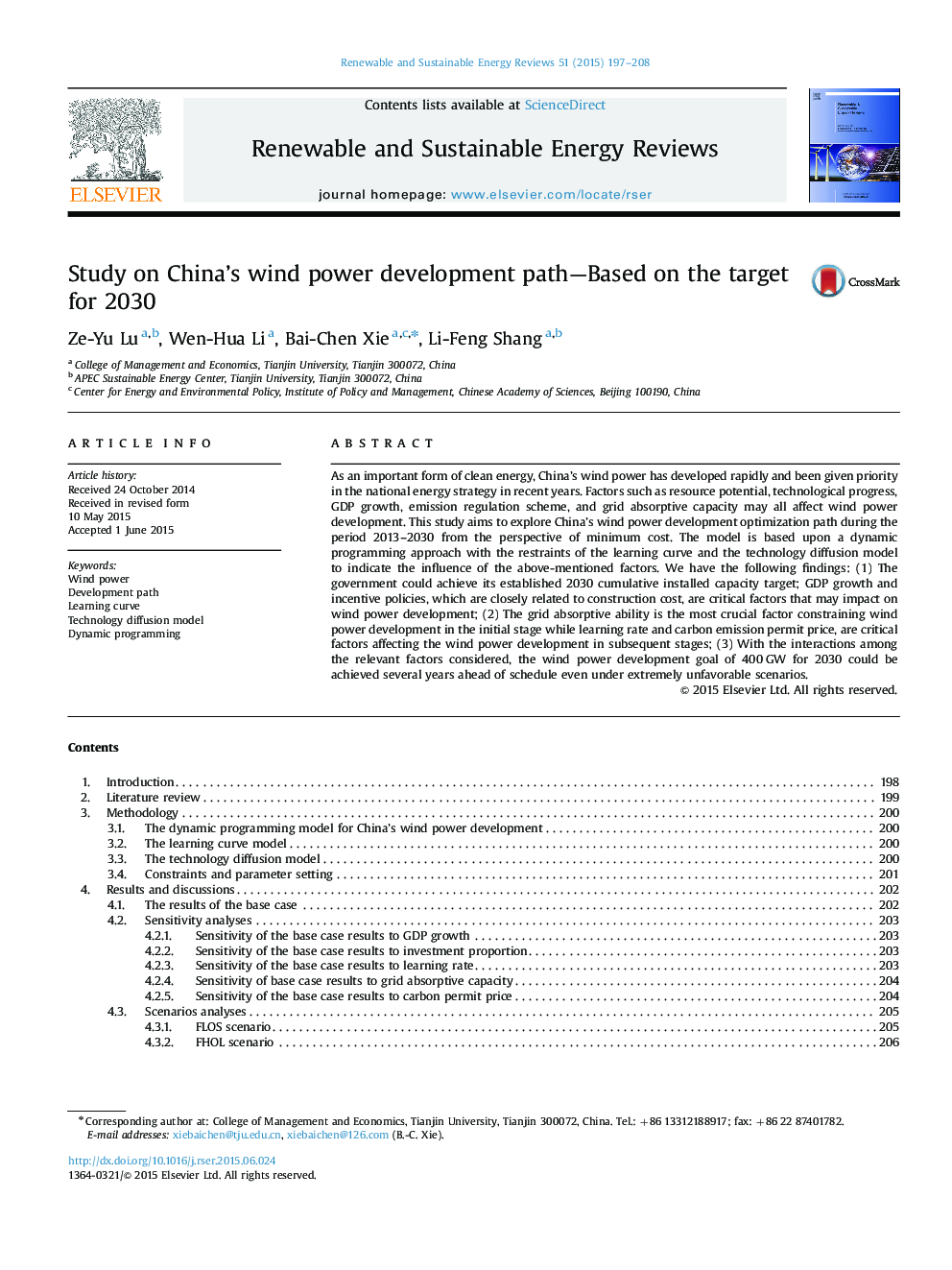| Article ID | Journal | Published Year | Pages | File Type |
|---|---|---|---|---|
| 8115655 | Renewable and Sustainable Energy Reviews | 2015 | 12 Pages |
Abstract
As an important form of clean energy, China's wind power has developed rapidly and been given priority in the national energy strategy in recent years. Factors such as resource potential, technological progress, GDP growth, emission regulation scheme, and grid absorptive capacity may all affect wind power development. This study aims to explore China's wind power development optimization path during the period 2013-2030 from the perspective of minimum cost. The model is based upon a dynamic programming approach with the restraints of the learning curve and the technology diffusion model to indicate the influence of the above-mentioned factors. We have the following findings: (1) The government could achieve its established 2030 cumulative installed capacity target; GDP growth and incentive policies, which are closely related to construction cost, are critical factors that may impact on wind power development; (2) The grid absorptive ability is the most crucial factor constraining wind power development in the initial stage while learning rate and carbon emission permit price, are critical factors affecting the wind power development in subsequent stages; (3) With the interactions among the relevant factors considered, the wind power development goal of 400Â GW for 2030 could be achieved several years ahead of schedule even under extremely unfavorable scenarios.
Related Topics
Physical Sciences and Engineering
Energy
Renewable Energy, Sustainability and the Environment
Authors
Ze-Yu Lu, Wen-Hua Li, Bai-Chen Xie, Li-Feng Shang,
